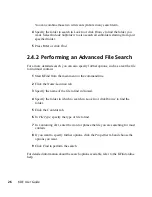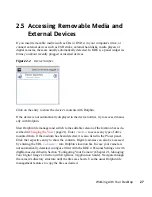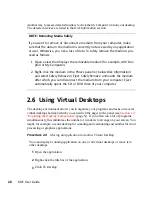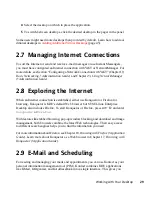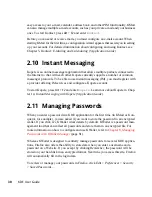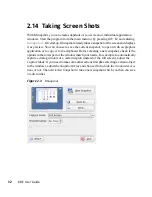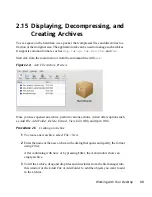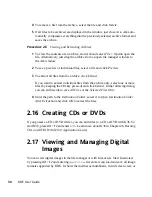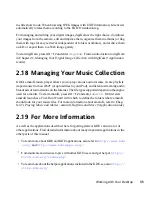
L
to lock the screen). You can also install personal or systemwide fonts here and
configure your sound system.
On the Advanced tab, find the following categories:
Advanced User Settings
Use this category to configure options like encoding or which database to connect
for track listings of audio CDs, to configure your digital camera, or to change the
settings for KWallet (the KDE password management tool). If needed, change the
default file associations to identify a file type and start an appropriate application.
Define how KDE handles sessions on login or shutdown and define which applica-
tions should be started automatically.
System
Hold option for the login manager, power management and Samba.
In the following sections, find examples of how to configure some aspects of your KDE
desktop that you might want to customize.
3.2 Configuring Desktop Objects
Your KDE desktop comes with a predefined set of desktop icons. By adding various
objects such as folders, files, or widgets, you can create additional icons on your desktop
and arrange them as you like.
Procedure 3.1
Adding Program Icons to the Desktop
To create a link to an application and place it on the desktop or the panel, proceed as
follows:
1
Click the main menu button and browse to the desired application.
2
Right-click and select Add to Desktop or Add to Panel from the context menu
that appears. If these menu items are not available, your desktop elements are
probably locked. Unlock them first as described in
Section 1.2.1, “Locking and
Unlocking Desktop Objects”
(page 7).
40
KDE User Guide
Summary of Contents for LINUX ENTERPRISE DESKTOP 11 - KDE
Page 1: ...SUSE Linux Enterprise Desktop www novell com 11 March 17 2009 KDE User Guide ...
Page 6: ......
Page 10: ......
Page 11: ...Part I Introduction ...
Page 12: ......
Page 24: ......
Page 46: ... To report bugs or add feature requests go to http bugs kde org 36 KDE User Guide ...
Page 67: ...Part II Managing Files and Resources ...
Page 68: ......
Page 72: ......
Page 96: ......

